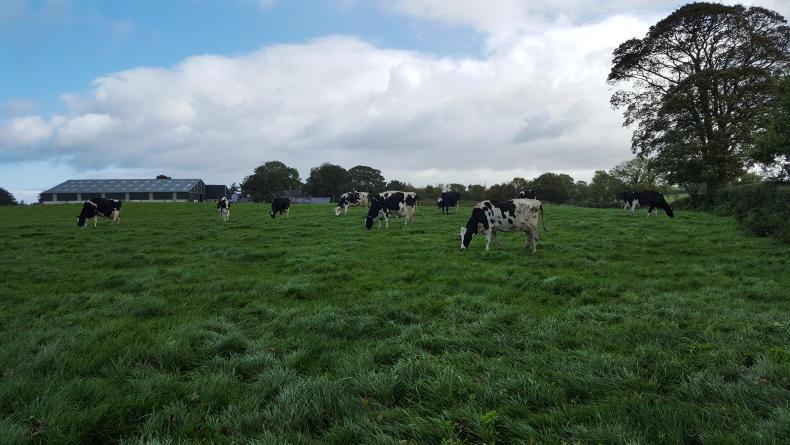The five-step approach to managing nutrients and improving soil fertility is used by programme farmers to get the most efficient use from organic manures and chemical fertilisers. This involves soil testing, addressing soil pH, identifying paddocks that are optimal for phosphorus (P) and potassium (K), applying slurry to low-index paddocks and then topping up with chemical fertilisers.
The soil index system for P and K is slightly different in Northern Ireland than the system used in the Republic of Ireland. In the NI system, intensive grassland soils with a P and K index 0 and 1 are deficient, index 2- and 2+ are optimal and index 3 and over is above optimal.
In the Republic of Ireland, soil index 1 is classified as very low, index 2 is low, index 3 is medium and index 4 is sufficient/excessive.
The pH scale is used in both systems to measure acidity of soils. With a pH of 6.3 being optimal for most grassland farms, any paddocks below pH6 need lime applied.
Soil analysis results also show magnesium and calcium levels. If the magnesium index is above 2 and lime is also required, then a calcium limestone product is recommended. If the magnesium index is below 2 and lime is required, then a magnesium limestone product should be used. There should be sufficient calcium in the soil to meet the needs of the grass plant if the soil pH is within the correct range.
Fertiliser plans designed for Dairylink Ireland participants by programme adviser Conail Keown are based on soil analysis results and the recommendations for P and K applications outlined in Table 1.
Nigel Corbett
Banbridge, Co Down
Results from soil testing carried out over the winter show that 42% of the milking platform is above pH 6.3, 54% is between 6 and 6.3 and only 4% is below 6. Soil pH has improved over the past three years, as we have been targeting lime to low-pH paddocks. In 2015, 41% of the milking platform was below pH5.8.
Looking at P and K, soil analysis shows that 62% of the platform is optimal or above for P and 94% of the grazing block is optimal or above for K. This also represents an improvement from 2015, when 49% of the platform had P index 1 and 16% had K index 1.
Most importantly, the improvement in soil fertility in recent years has had a positive impact on grass growth. Grass measuring figures for the grazing platform show that annual growth increased from 9.41t DM/ha in 2016 to 11.29t DM/ha last year.
Other factors that have also contributed to improved grass growth include better grazing management and reseeding some paddocks that have optimal soil fertility.
Fertiliser plan
Regardless of P and K indices, all the grazing block will receive 250 units of nitrogen per acre, either as urea, CAN or as part of a compound fertiliser. Paddocks that are optimal for P and K will receive no compound fertiliser or slurry.
A few paddocks are index 1 for both P and K and will get a bag per acre of 20:10:10 after the first, third and fifth grazings.
Paddocks with P index 0 and K index 1 will get a bag per acre of 20:10:10 after the third and fifth grazing and half a bag per acre of DAB (0:46:0) in March.
There were six acres of the grazing block ploughed last autumn for a reseed, but wet weather meant we never got it harrowed and sown out. This will be done as soon as ground conditions allow and the plan is for 200 units of nitrogen per acre and three bags of 17:17:17 per acre to go on to the reseed this season.
On the silage ground, 96 units of nitrogen and 3,000 gallons of slurry per acre and will go on for first cut, with low P- and K-index silage fields getting three bags of 18:6:12 per acre.
To make it easier to identify paddocks with below-optimal pH, P and K levels, we have three colour-coded maps of the farm on the wall in the dairy.
Watch: scanning and getting grazing on track in Down
